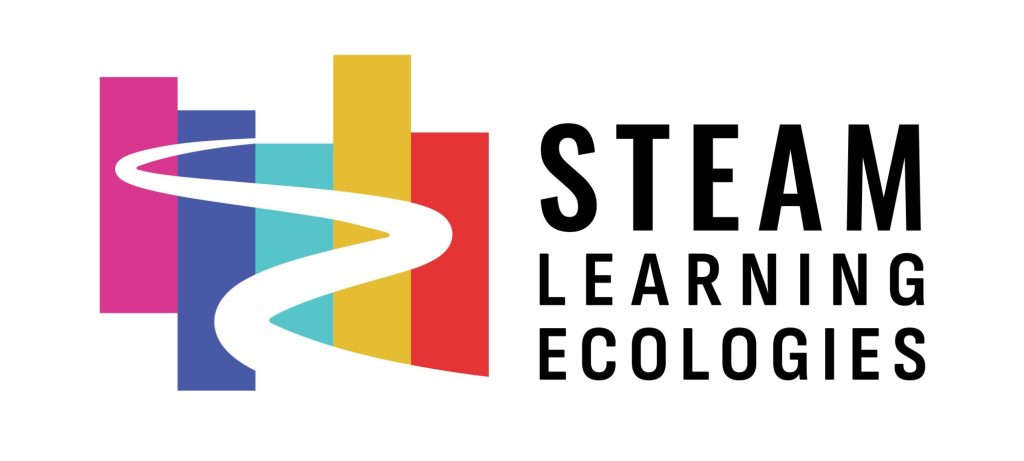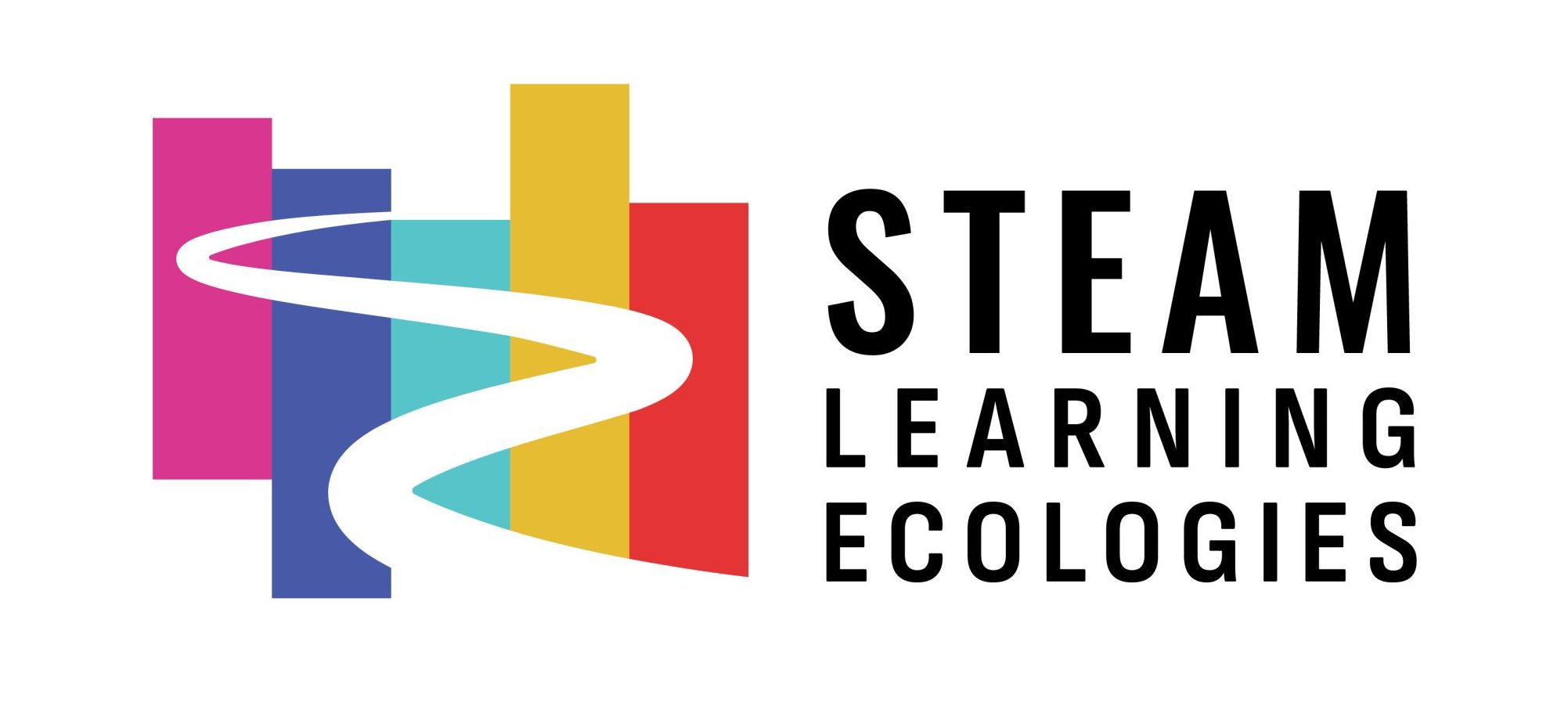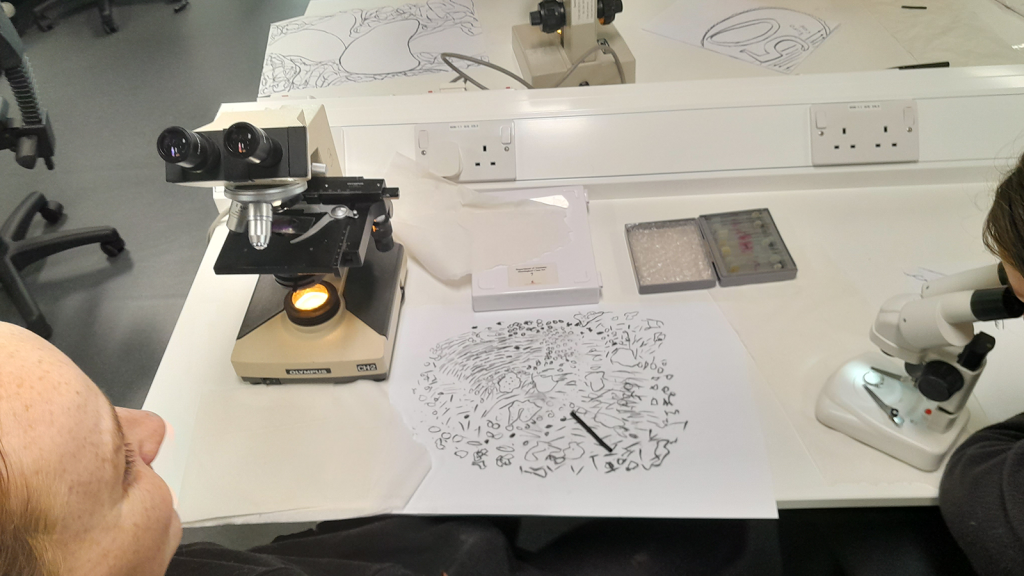The SFI Research Centre for Medical Devices (CÚRAM) cooperated with the Ballybane Library, the students from the Galway Community College, and a local artist to wonderfully design a Learning Ecology that merged creativity with an investigation of the human brain functioning. The activities were contextualised in light of the Brain Awareness Week, a global campaign to foster public enthusiasm and support for brain science.
You may read more about this exploration of human brain in our dedicated article!
At the end of this incredible initiative, we had the privilege of sitting down with Lisa Martyn, one the Ballybane Library staff, and ask her questions to learn from her perspective on the undertaken activities. Here’s what she had to say:
Can you “paint a picture” of the context in which your STE(A)M Learning Ecology operates? Describe a bit the local setting, including the type of stakeholders involved (science centres, science-related programmes, industry, local actors, researchers, experts, etc.).
Ballybane Library is situated on the east side of Galway city in a disadvantaged area with a certain amount of social unrest. In the past, the library experienced behaviour issues from local teenagers, resulting in their removal from the premises. Furthermore, we had lost connection with them in recent years due to the COVID-19 pandemic.
This STE(A)M Learning Ecology (SLE) allowed teenagers to re-engage with the library and its staff in a positive and creative manner. They could safely take ownership of the space while exploring STE(A)M Learning. Their work will now become a permanent part of the library’s identity.
Overall, the main stakeholders involved in the SLE were as follows: Ballybane Community Library (the SLE initiator), the CÚRAM SFI Research Centre for Medical Devices, Galway Community College, and artist Alison Mac Cormaic. Other partners, though marginally involved, were crucial in supporting the activities. They included the Galway City Museum, the Centre for Microscopy and Imaging (University of Galway), and the School of History and Philosophy (University of Galway).
Do you have any prior experience with this type of collaborations?
I had no prior experience with this type of collaboration, so this opportunity is rare for us, and we are delighted by it.
How did you initiate this collaboration? How did you select the stakeholders for your STE(A)M Learning Ecology? Did you know them from before? If not, how did you approach them?
The library approached CÚRAM SFI Research Centre for Medical Devices because we were aware of their Artist in Residence programme and we wanted to explore the use of STEAM in our Maker Space to address the lack of engagement with teenagers. CÚRAM then connected us with artist Alison Mac Cormaic, who had experience in creating large-scale group artworks in community settings and youth education. Additionally, we reached out to the local secondary school, Galway Community College, and their Transition Year program. These actors were the primary stakeholders in the project.
Together, we developed a plan for the SLE through a co-creation workshop involving all partners. During this process, CÚRAM facilitated connections with other stakeholders for the implementation phase, such as the Galway City Museum, the Centre for Microscopy and Imaging, and the School of History and Philosophy – both located at the University of Galway. While these partners were less involved than the main four, they provided key workshops during the SLE.
Were there any challenges occurred while implementing the STE(A)M Learning Ecology and/or interacting with the relevant stakeholders? How did you address them?
It would be more engaging to mention that there were challenges, but personally, I did not feel like I encountered any significant difficulties I think it was all thanks to the groundwork and planning done by the CÚRAM staff. They really took care of everything, from speaking with the school to arranging a bus for the students. They carefully organized the trips to the Galway City Museum and the University, ensuring that everything went smoothly and that the desired learning outcomes were achieved. I took part in the museum outing myself, and experienced at first hand the students learning and heightened interest in the subject. The artist chosen had a lovely manner and her passion for working with the selected materials ignited a similar enthusiasm in the students.
How do you think that your STE(A)M Learning Ecology impacted the participants? What are the benefits and the added value brought to your community?
The initial impact is that participants now feel a sense of ownership in their public library. I truly believe it has sparked an interest in science, especially in science of the brain, among them. Moreover, it gave them the opportunity to engage with art materials that are not typically accessible to their age group.
For the community, there is now a beautiful and enduring piece of art crafted by local youth in their library, which endows a sense of pride of place.
The learning and collaboration have been incredibly rewarding for library staff as well. The insights gained will be invaluable for future collaborations with different stakeholders.
Looking ahead, what will you do to ensure that your STE(A)M Learning Ecology (and the collaboration between your stakeholders) can be sustainable in the future years?
The artwork will decorate the walls for as long as the library remains in the community, ensuring that the learning it represents is always visible. Also, CURAM have commissioned a plaque for the wall just underneath the mosaic elaborating on the thought process behind it and all the collaborators involved. The artwork is located in the Maker Space, and we have already seen that students have been using this space more frequently from this moment onwards. We now have a very solid connection with the other main partners – which was formed over the 2 months of the SLE. As the artwork is a permanent fixture, we aim to showcase it to all members of the community, including other libraries, schools, and arts organizations. This permanence may serve as inspiration for future Learning Ecologies initiatives.
Furthermore, Galway Community College runs a Leaving Certificate Applied programme. As a result of this SLE, CÚRAM is now hosting placements for the students undertaking this programme for over 10 weeks – to enhance STEAM learning for the College. During these placements, pupils will explore other arts and science organizations from an engagement perspective, laying the groundwork for future SLEs!





One Response
Ballybane library are delighted with this project, a legacy from these teenagers. They will be encouraged to visit the library for years to come, possibly with their own children in the future to reminisce and show their work. It makes them valued stakeholders in their community library. Sincere thanks to all the CURAM team for growing this project.